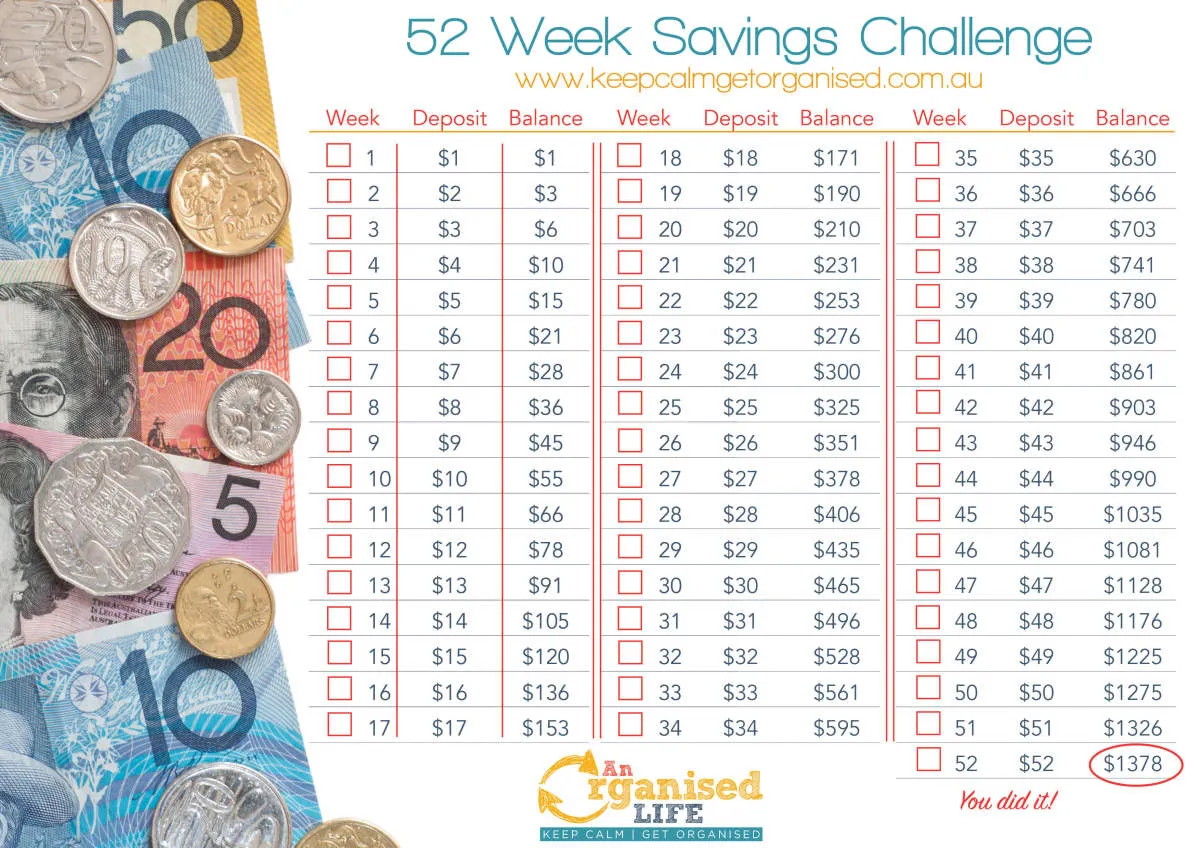Looking to buy your dream home? Learn how to save money for a down payment on a house with these smart and practical tips. From budgeting strategies to cutting expenses, we’ve got you covered!
Setting a Savings Goal
Knowing how much house you can afford is the first step in buying a home. But equally important is figuring out how much money you need to save for a down payment. This will be the foundation of your homebuying journey.
Determine your target down payment. The down payment is the upfront portion you pay towards the house’s purchase price. While a 20% down payment has traditionally been the norm, there are options available even if you can’t put down that much. Research different mortgage options and consider factors like interest rates and loan terms to decide what down payment percentage works best for you.
Calculate your savings goal. Once you know the down payment percentage, calculate the actual amount you need to save. For example, if you’re aiming for a 20% down payment on a $300,000 house, you’ll need $60,000 for your down payment.
Break down your savings goal. A large sum like a down payment can feel daunting. Break down your savings goal into smaller, manageable chunks. This could be monthly, bi-weekly, or even weekly goals, depending on your income and expenses. Having smaller milestones will make the process feel less overwhelming and more achievable.
Creating a Savings Plan

Saving for a down payment requires discipline and a well-structured plan. Here’s a step-by-step guide to get you started:
1. Define Your Savings Goal
Determine the down payment amount you’re aiming for. This typically ranges from 3.5% to 20% of the home’s purchase price. A larger down payment can lead to lower monthly mortgage payments and may even help you secure a lower interest rate.
2. Set a Realistic Timeline
Establish a feasible timeframe for reaching your savings goal. Consider factors like your current income, expenses, and desired home purchase date. Be realistic about how much you can comfortably save each month without straining your finances.
3. Create a Budget
Track your income and expenses meticulously to identify areas where you can cut back and save more effectively. Analyze your spending habits and pinpoint non-essential expenses that can be reduced or eliminated. Consider using budgeting apps or spreadsheets for easy monitoring.
4. Automate Your Savings
Set up automatic transfers from your checking account to your dedicated savings account each month. This ensures consistent saving without requiring constant manual effort. Treat these automated transfers like non-negotiable expenses.
5. Explore Additional Income Sources
Consider supplementing your primary income with side hustles or freelance work. Utilize your skills and interests to generate extra cash flow that can be directed towards your down payment fund. Explore options like online tutoring, pet sitting, or selling crafts.
6. Track Your Progress and Adjust
Regularly review your savings plan and track your progress towards your goal. Make adjustments as needed based on your financial situation or changes in your timeline. Life throws curveballs, so flexibility is key.
Finding Extra Money to Save
Saving for a down payment on a house often feels like a monumental task, especially when you’re convinced you’re already stretched thin. However, discovering hidden pockets of cash might be easier than you think. Here are some strategies to unearth extra money for your down payment fund:
1. Track Your Spending and Identify Leaks
You can’t fix what you can’t see. Begin by meticulously tracking your expenses for at least a month. Utilize budgeting apps, spreadsheets, or even a simple notebook. Analyze your spending patterns – you might be surprised by those “small” daily expenditures that add up significantly. Once you’ve identified spending leaks, brainstorm ways to plug them. Could you reduce dining out, switch to a more affordable mobile plan, or find cheaper entertainment options?
2. Embrace the Side Hustle
The gig economy offers countless opportunities to generate extra income. Consider your skills and interests – could you freelance write, drive for a rideshare service, pet-sit, or teach online courses? Even dedicating a few hours each week to a side hustle can significantly boost your savings potential.
3. Sell Unwanted Belongings
One person’s clutter is another person’s treasure! Declutter your home and sell items you no longer need or use. Online marketplaces, consignment shops, and garage sales provide avenues to turn unused possessions into cash for your down payment.
4. Revisit Your Bills and Negotiate
Don’t underestimate the power of negotiation. Contact your service providers (internet, cable, insurance) and inquire about potential discounts or lower rates. You might be surprised by how much you can save by simply asking.
5. Set Savings Challenges
Inject a dose of fun and motivation into your savings journey by setting challenges. Try the “52-week money challenge” where you save a progressively larger amount each week, or explore other creative savings challenges that resonate with your goals.
Cutting Expenses to Save More

Saving for a down payment on a house requires serious financial discipline. While boosting your income is helpful, cutting expenses often provides the quickest route to reaching your savings goal faster. Here’s how to trim the fat from your budget:
1. Track Your Spending
You can’t cut expenses effectively if you don’t know where your money is going. Use a budgeting app, spreadsheet, or even a notebook to track every dollar you spend for a month. Identify areas where you can realistically cut back.
2. Reduce Housing Costs
- Downsize: If possible, consider moving to a smaller, more affordable apartment.
- Negotiate Rent: In some cases, you may be able to negotiate a lower rent with your landlord.
- Get a Roommate: Sharing housing costs with a roommate can significantly reduce your monthly expenses.
3. Minimize Transportation Costs
- Public Transportation: Opt for buses, trains, or subways instead of driving whenever possible.
- Bike or Walk: If feasible, choose biking or walking for short commutes and errands.
- Carpool: Arrange carpools with colleagues or neighbors to share fuel costs.
4. Slash Food Expenses
- Cook at Home: Eating out less and preparing meals at home is a significant money-saver.
- Pack Lunches: Avoid expensive takeout lunches by bringing your own from home.
- Shop Smart: Compare grocery prices, use coupons, and buy in bulk to reduce your grocery bill.
5. Cut Back on Entertainment
- Limit Dining Out: Enjoy restaurant meals less frequently or explore more affordable options.
- Find Free Activities: Explore free or low-cost entertainment options like parks, museums (often have free days), or community events.
- Cut Subscription Services: Evaluate your streaming services, gym memberships, and other subscriptions – eliminate or downgrade those you use less.
Saving with High-Interest Accounts
When it comes to saving for a down payment, making your money work for you is crucial. That’s where high-interest savings accounts come in. These accounts offer a higher annual percentage yield (APY) compared to traditional savings accounts, allowing your money to grow faster.
Here’s how high-interest accounts can boost your down payment savings:
- Earn More Interest: With a higher APY, your savings will accumulate interest at a faster rate, helping you reach your down payment goal quicker.
- Compounding Returns: The interest earned on high-interest accounts is often compounded daily or monthly. This means you earn interest on both your initial deposit and any interest accrued, creating a snowball effect.
- Low Risk: High-interest savings accounts are FDIC-insured (up to $250,000 per depositor, per insured bank), providing security and peace of mind. Your money is protected while it grows.
Tips for Maximizing High-Interest Savings:
- Shop Around: Compare rates from different banks and credit unions to find the best APY.
- Set Up Automatic Transfers: Make saving effortless by scheduling regular automatic transfers from your checking account to your high-interest savings.
- Minimize Withdrawals: Resist the temptation to dip into your savings. Frequent withdrawals can negate the benefits of compounding interest.
Using Windfalls for Savings

Unexpected influxes of cash, like tax refunds, work bonuses, or inheritances, present golden opportunities to supercharge your down payment savings. Instead of viewing these windfalls as bonus spending money, earmark them strategically for your house fund. Here’s how:
Resist the urge to splurge.
It’s tempting to spend unexpected money on something fun and immediate, but remember your long-term goal. Before you make any decisions, transfer at least a portion, if not all, of the windfall directly into your dedicated savings account.
Make a dent in your goal.
Depending on the size of your windfall, you might be able to reach a significant milestone in your savings journey. Imagine finding yourself halfway to your target down payment thanks to a well-timed inheritance! This momentum can be incredibly motivating and help you stay focused on your ultimate goal.
Explore investment options.
For larger windfalls, consider exploring investment opportunities that align with your risk tolerance and timeline. A financial advisor can help you navigate potential options like high-yield savings accounts, certificates of deposit (CDs), or even low-risk index funds, allowing your money to grow more significantly over time.
Tips for Staying Motivated
Saving for a down payment on a house is a long-term goal that requires dedication and perseverance. It’s easy to get discouraged, especially when you see the finish line far in the distance. Here are a few tips to help you stay motivated:
1. Visualize Your Goal
Keep a clear picture in your mind of what you’re working towards. Print out a picture of your dream home, create a vision board, or write yourself a letter about why you want to buy a house. Regularly remind yourself of the end goal and how good it will feel to achieve it.
2. Break Down Your Goal
A large sum like a down payment can feel overwhelming. Break it down into smaller, more manageable milestones. For example, instead of focusing on the total amount, aim to save a certain amount each month or reach specific savings targets. Each milestone achieved provides a sense of accomplishment and keeps you moving forward.
3. Track Your Progress and Celebrate Milestones
Use a spreadsheet, a budgeting app, or even a simple notebook to track your savings progress. Seeing your savings grow visually can be a great motivator. Celebrate your milestones, no matter how small, to reinforce your progress and keep your spirits high.
4. Find an Accountability Partner
Share your saving goal with a trusted friend, family member, or financial advisor. Having someone to check in with and hold you accountable can provide encouragement and support, especially during challenging times.
5. Reward Yourself (Within Reason)
It’s important to acknowledge your hard work and dedication. Set up small, budget-friendly rewards for reaching milestones. It could be a nice dinner out, a small purchase you’ve been wanting, or an experience you’ll enjoy. Just make sure the rewards don’t derail your savings plan.
6. Remember Your “Why”
When you find yourself losing motivation, remind yourself why you started saving for a down payment in the first place. Is it to build equity, have a place to call your own, or create a better future for yourself and your family? Reconnecting with your “why” can reignite your drive and determination.
Reaching Your Down Payment Goal

Saving a significant sum of money for a down payment can feel like a daunting task, but with a strategic approach, it’s entirely achievable. Here’s how to break down your goal and stay motivated along the way:
1. Define Your Timeline
Establish a realistic timeframe for your purchase. This will directly impact how aggressively you need to save. A shorter timeline necessitates higher monthly savings, while a longer one allows for smaller, more manageable contributions.
2. Break Down Your Savings Target
Once you have a timeline and down payment amount in mind, break it down into smaller, manageable milestones. For example, instead of focusing on a $30,000 goal, aim for $1,000 per month for 30 months. Celebrating these smaller victories can help maintain momentum.
3. Track Your Progress
Use a spreadsheet, budgeting app, or even a simple notebook to diligently track your savings. Visualizing your progress serves as a powerful motivator and helps you stay accountable to your plan.
4. Adjust Your Budget for Flexibility
Life is unpredictable, and unexpected expenses can arise. Build flexibility into your budget to accommodate these situations without derailing your savings plan entirely. Having an emergency fund can prevent you from dipping into your down payment savings.
5. Celebrate Milestones and Stay Motivated
Acknowledge and celebrate your achievements along the way. Whether it’s reaching a specific savings milestone or simply staying on track for another month, recognizing your progress helps maintain motivation and reinforces positive financial habits.
Conclusion
In conclusion, saving money for a down payment on a house requires discipline, budgeting, and setting clear financial goals. By following these tips and making smart financial decisions, you can achieve your goal of buying a home.

